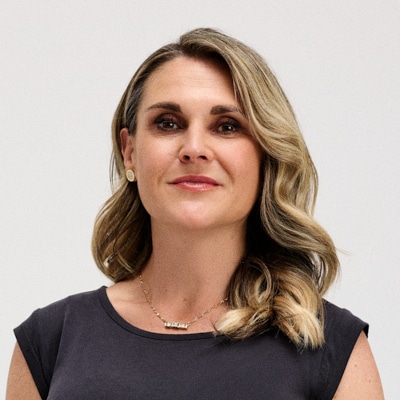Customer Experience Strategist
Throwback to UX Camp Ottawa 2014
Customer Experience Strategist
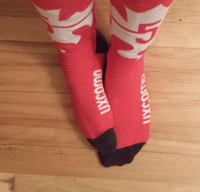 Last year, Thomas presented the big ideas of UX Camp Ottawa 2013. On November 8 and 9, Canada's largest user experience event celebrated its fifth edition. For the occasion, no less than three Adviso specialists went on site to attend conferences by nine authors and experts who have been actively contributing to improving the web experience, sometimes for more than 15 years. Here is the first article in a series dedicated to the ideas and methods that inspired us the most.
Last year, Thomas presented the big ideas of UX Camp Ottawa 2013. On November 8 and 9, Canada's largest user experience event celebrated its fifth edition. For the occasion, no less than three Adviso specialists went on site to attend conferences by nine authors and experts who have been actively contributing to improving the web experience, sometimes for more than 15 years. Here is the first article in a series dedicated to the ideas and methods that inspired us the most.
Unify user research
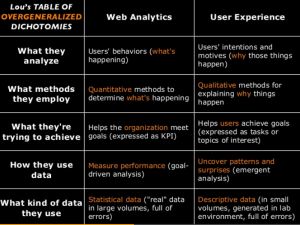
Excerpt from Lou Rosenfeld's "Beyond User Research" presentation
During his presentation entitled Beyond User Research , Louis Rosenfeld reminded us of how fragmented user research is. On the one hand, while measurement teams analyze the “WHAT”, user experience specialists generally seek to understand the “WHY”. As these two aspects are complementary, it is crucial to unify the data obtained in order to optimize their interpretation.
On the other hand, the founder of Rosenfeld Media insists on the need to find a balance between quantitative and qualitative research methods , the objective being to obtain the most complete data possible on your users. We also note that among the twenty or so existing methods, some such as card sorting or ethnographic studies are situated precisely between the study of the "WHAT" and the "WHY" mentioned above, hence the need to select them . and plan them effectively, taking into account their duration and the type of information provided.
“Cheap and fast” user tests
Too expensive, no time, waiting for the next redesign, lack of expertise… who doesn't have a good reason to put off user testing? Last year, Jason Westerlund of the National Art Center showed us that system or organizational constraints should not be an obstacle to improving the user experience and that every opportunity to test his site should be seized. This year, the title of Steve Krug 's presentation , You're NOT Doing Usability Testing? Are You… Nuts? , already said a lot about what he thinks of companies that do not test their web platform. If you are wondering:“Why waste time (and money) listening to people talk about problems I already know? the author of the bestselling book Don't Make me Think and Rocket Surgery Made Easy will simply answer: " Because they will also find the problems you don't yet know" . There is no need either, according to him, to recruit a shovel and waste a lot of time on transcriptions and analyses. You just need to follow the following procedure:
- Recruit three users : that's enough to find more problems than you can solve.
- Watch the test on a screen , from another room (no lab or mirror).
- Save it with a simple tool (like Camtasia for example).
- Avoid thirty-page reports that no one will read. A quick debrief over dinner will be more than enough.
Finally, here are six tips from Mr. Krug to optimize the effectiveness of your user tests:
- Start testing earlier in the project : you can test an existing site or application (in a redesign project), competitors' sites and applications, a "sketch" or a model, or even preliminary prototypes.
- Test regularly : Plan your tests in advance and outside of development sprints. Tell yourself that whatever the stage of the project, a test will always teach you something.
- Recruit freely : no need to worry about looking for tester profiles that correspond exactly to your target. Problems related to a user segment will eventually be discovered.
- Make testing a spectator activity : Seat observers comfortably around a box of donuts or croissants at $5 (each) to make watching a user test as attractive as watching a hockey game.
- Focus on a small number of priority issues (detect the top three issues that emerge from each test) and deal with the most difficult ones first.
- Finally, be lazy! Prefer a correction that will solve your problem to a major overhaul that may create new ones.
You are now equipped and ready to make your projects more efficient than ever in terms of user experience! However, depending on the size, nature and operation of your organization, it will be more or less easy to implement all these ideas. Fortunately, some stakeholders have taken the trouble to give us some keys to better accept these changes:
Reduce communication barriers
We often tend to associate change with a loss, and it is necessary to be aware of this behavior to better counter it: Beyond planning, Lou Rosenfeld mentioned the importance of creating effective communication with his collaborators taking into account common interests and banishing jargon likely to put them off.
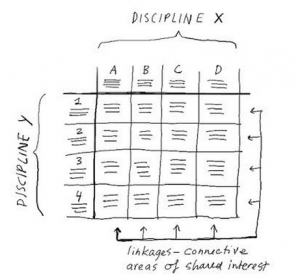
For her part, Abby Covert , a specialist in information architecture, recalled how subjective this is. She therefore suggests better adapting to the language of her interlocutors and schematizing the information as much as possible (using existing models and creating new ones) in order to better compare the models and interpretations of each.
Consider organizational personas
Finally, Kim Goodwin, during her conference entitled Designing how to design , proposed to counter reluctance to change in two ways:
– Create dissatisfaction with the status quo (note that the user testing we talked about earlier can help with this)
– Be clear about what the change encompasses and ensure that information is communicated at all levels (horizontal and vertical )
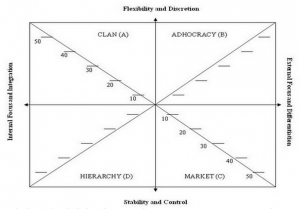
by Kim Goodwin
On the other hand, Kim strongly encourages us to pay more attention to the values and expectations of the organization that we want to change, and to consider it as a persona in its own right. We would then have four major organizational profiles:
- The Clan , which values internal resources and expertise, will have a rather flexible and customer-oriented approach. The roles of each are well defined and yours, as a UX specialist, is to coach your collaborators . Remember that the clan favors participation and collaboration, and rejects any exclusion.
- Adhocracy is a start-up style organization, seeking external expertise and valuing flexibility. In this case, you need to become a “Whiteboard Ninja” : maximize sketches and user feedback, and avoid the word “process”.
- The Market is an externally focused organization, yet in need of stability. You will then be a true user experience scientist , able to present your recommendations in the form of reports and statistics, with an emphasis on data (especially quantitative), and avoiding risk and loss at all costs. of time.
- Finally, the Hierarchy also values anything that can increase its control and stability. However, it is oriented towards internal resources and expertise. If you are in this scenario, then you will need to become an expert in design and process , able to provide maximum structure and minimize risk.
Conclusion
Finally, here is a summary of the points to remember:
- Before you jump into user research, take some time to think about what data you need and how much time you have , then plan.
- Test, test, and test your sites to improve them , and prioritize fixes over redesigns. You will make fewer mistakes and it will cost you less.
- Communicate with your collaborators , and popularize the information as much as possible. Your ideas will pass better.
- Finally, adapt your speech to the needs of your company.
-1.png)


